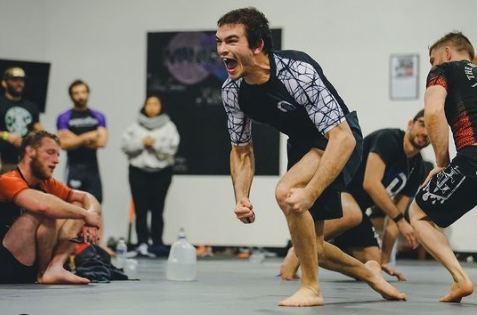The COVID-19 Bailout That’s Left Every Hospital Unhappy In Its Own Way
In the throes of the novel coronavirus outbreak in early April, Kenneth Raske, president of the powerful Greater New York Hospital Association, took his case for needing billions in federal relief funding to another New Yorker, well placed in the White House.
The April 8 call with Jared Kushner lasted “probably 30 seconds.” After all, Raske said, the facts speak for themselves.
The hospitals Raske represents across New York, New Jersey, Connecticut and Rhode Island have registered hundreds of thousands COVID-19 cases. They are on the front lines of the most urgent and horrific outbreak in the country.
In Missouri, Scotland County Hospital CEO Dr. Randy Tobler said his staff has seen just four outpatient cases. He wrote to his senator, Republican Roy Blunt, seeking help securing bailout money. The focus on the coronavirus has brought elective procedures and routine care — the lifeblood of his operation — to a halt. Nearly half of the country’s rural hospitals were operating in the red before the pandemic hit and at least three have shuttered since it began.
The initial tranche of money the Department of Health and Human Services sent Tobler’s hospital was about $480,000, or $120,000 per COVID-19 patient and enough for the hospital to cover one cycle of payroll. With that and another stream of federal loans, he estimated, the hospital should have enough money to make it to the fall.
New York received roughly $1.9 billion from the first round, or $11,600 per reported COVID-19 patient, according to a Kaiser Health News analysis based on cases as of April 9.
Multiple hospital executives met with Trump at the White House earlier this week, including for-profit chains HCA Healthcare and LifePoint Health; Ascension, NYU Langone Health, the Cleveland Clinic, Intermountain Healthcare and Ochsner Health; and Rick Pollack, the head of the American Hospital Association.
But whatever levers of influence they are pulling, hospitals big and small across the nation say they are shortchanged by the federal bailout as they face both a health crisis and an economic one.
Trump’s top health officials have $100 billion in coronavirus emergency funding to dole out — and complete discretion about where it goes. HHS so far has sent hospitals and other health care facilities $30 billion, drawn from the massive $2.2 trillion emergency coronavirus rescue package Trump signed into law March 27. The next round, which a senior administration official said will send funds to COVID-19 hot spots, is expected by week’s end.
On phone calls with senior federal officials, hospital executives have warned of dire consequences if they don’t quickly receive cash. They are pushing their senators and leaning into governors who are Trump allies. For all their political clout, however, they are having mixed success.
For Tobler, every day in the pandemic has a new challenge: figuring out where to get saran wrap to cover his thermometers, as well as Everclear and aloe to make hand sanitizer. He worries rural hospitals are not going to stand out in the deluge of requests.
“The string we’re pulling on is a string and the urban institutions have rope they’re pulling on,” he said. “It’s influence, it’s politics, it’s elitism.”
Raske, after all, called on President Donald Trump’s son-in-law and senior adviser, who is heavily involved in the federal response to the pandemic that had sickened more than 640,000 Americans as of Thursday afternoon.
“I couldn’t have asked for a better audience,” said Raske, whose association spent $2.5 million on its federal lobbying efforts year. “The question is, what will be the action that will emanate from the facts?”
Coronavirus-related funding should go to the places caring for the most patients, he said.
“Are they paying overtime to their workers, as we are?” he said. “Are they paying money for staffing companies to come in from all over the country to staff the institutions?
“Are they paying extraordinary bills for bringing in PPE at 10 times the cost that it used to be because we’re burning through 4 million masks a week? Are they using drugs to run the ventilators for 2,700 patients that are intubated? Shall I continue?”
The Funding Formula
HHS pegged its first round of coronavirus aid to revenue from the Medicare program for seniors — instead of steering it to hot spots, for example. That decision was rooted in trying to get money out the door quickly, according to multiple people in and outside the administration.
“Using Medicare reimbursement was the fastest way because we had that data,” CMS Administrator Seema Verma said on a call with reporters.
But that distribution created vast disparities among states — for example, New Jersey received about $18,000 per COVID-19 case, whereas Minnesota, Nebraska and Montana each received over $300,000 per patient.
“Our top three asks were speed, speed and speed,” said Brian Tabor, president of the Indiana Hospital Association. In Indiana, nearly 4,500 institutions collectively received $669 million, or roughly $105,000 per confirmed case.
Tabor shares his home state with Vice President Mike Pence as well as top Trump health officials HHS Secretary Alex Azar and Verma, who were involved in figuring out how to distribute funding.
Tabor said he didn’t call Azar and Verma directly, instead largely working with Indiana lawmakers in Congress and through Indiana Hospital Association’s national counterpart, the American Hospital Association.
The AHA represents thousands of urban and rural nonprofit systems across the country and spent more than $22 million on lobbying last year, dwarfing many cohorts in the lobbying industry. The National Rural Health Association spent a mere $111,400.
“We’re not the ones in the small rooms when the big decisions are happening,” said Maggie Elehwany, the government affairs and policy vice president for the NRHA. “We just hope we’re yelling loudly enough that they hear us when the door is closed.”
The $30 billion was distributed to more than 300,000 entities around the country but the decision to rely on past Medicare billings meant many providers hardly got a bite of the apple, including children’s hospitals and nursing homes, which predominantly rely on Medicaid and other programs for reimbursement.
Trump has also said that the White House is looking at using part of the hospital bailout fund to cover coronavirus costs for the uninsured, which is likely to disproportionately benefit mostly Republican-led states that did not expand their Medicaid programs under the Affordable Care Act. Those places generally also aren’t where the first COVID-19 hot spots emerged, as the early outbreaks were concentrated in coastal states with lower uninsured rates.
Further complicating the dynamic is that states with high volumes of coronavirus-infected patients will get reimbursed for that care, whereas hospitals that delay elective surgeries but don’t see a swell of patients won’t see that cash coming in.
Sens. John Barrasso (R-Wyo.) and Michael Bennet (D-Colo.) also pushed for an initial bailout plan targeted to rural hospitals that never made it into the final version. Despite letters and a call with CMS’ Verma, a targeted rural bailout hasn’t materialized.
Sen. Joe Manchin (D-W.Va.), whose state has lost one rural hospital since the pandemic began, said that the coronavirus crisis exacerbates deep-seated financial vulnerabilities among rural providers as they treat an older, more vulnerable population.
“I don’t have the Jared Kushners to call and say, ‘You’re from New York, I’m from New York, why don’t you do this?’” he said. “If rural health care collapses, then God help our country.”
More Money To Come
Roughly two-thirds of the HHS coronavirus money has yet to go out the door, ensuring that a fierce lobbying effort from all parts of the health sector will continue to target the White House, HHS and Congress, which continues to negotiate additional legislation that could send billions more to hospitals.
“We’re casting our lines everywhere,” said Missouri Hospital Association CEO Herb Kuhn. “I don’t want to say all the people in Washington I’m talking to.”
Kuhn, like Azar and many other current HHS leaders, is a veteran of the George W. Bush administration.
In Georgia, Jimmy Lewis, who runs a network of rural hospitals and describes the first round of emergency funding as a “breath of fresh air,” said he’s been so buried on the day-to-day survival of his facilities that he “hadn’t had a chance to be involved in the Washington level since this whole shutdown got started.”
But he said he knows how he’ll try to be heard — talking to Georgia’s junior senator, Republican Kelly Loeffler, who gave him a call “out of the clear blue” and has stayed in touch since.
“I got her email address,” he said, “and she responds.”







